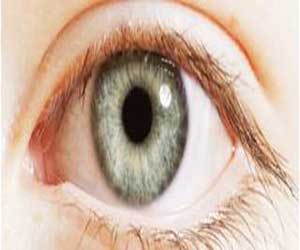- Home
- Editorial
- News
- Practice Guidelines
- Anesthesiology Guidelines
- Cancer Guidelines
- Cardiac Sciences Guidelines
- Critical Care Guidelines
- Dentistry Guidelines
- Dermatology Guidelines
- Diabetes and Endo Guidelines
- Diagnostics Guidelines
- ENT Guidelines
- Featured Practice Guidelines
- Gastroenterology Guidelines
- Geriatrics Guidelines
- Medicine Guidelines
- Nephrology Guidelines
- Neurosciences Guidelines
- Obs and Gynae Guidelines
- Ophthalmology Guidelines
- Orthopaedics Guidelines
- Paediatrics Guidelines
- Psychiatry Guidelines
- Pulmonology Guidelines
- Radiology Guidelines
- Surgery Guidelines
- Urology Guidelines
High fat diet linked to macular degeneration and sight-loss in later life

The researchers at the University of Southampton have found that an unhealthy diet including high fat and cholesterol-enriched food can contribute to developing eye diseases which lead to a loss of vision, has revealed.
The study, led by Dr Arjuna Ratnayaka, has shown how retinal pigment epithelial (RPE) cells in the eye become damaged due to poor nutrition but also revealed a potential new treatment route through which these cells could be rescued before diseases such as age-related macular degeneration (AMD) develop.
AMD is an irreversible blinding disease caused by genetics and external factors such as smoking, high blood pressure or being overweight. It affects the central vision, which is used for reading and recognising faces and is a leading cause of sight loss in the UK – affecting more than 600,000 people.
How an unhealthy diet could increase the likelihood of eye disease is still poorly understood, therefore scientists analysed how disease-causing pathways triggered by poor nutrition could impact RPE cells.
Damage to RPE cells occurs at the onset of AMD making them less equipped to support the eye’s photoreceptors, the cells in the retina which respond to light. The death of photoreceptors leads to permanent sight-loss.
The study determined how healthy RPE cells breakdown by-products generated by daily activities of photoreceptors through the cells’ waste disposal system (which terminates in small vesicles called lysosomes).
Scientists found healthy RPE cells had a considerable degree of flexibility to cope with changing conditions in the ageing eye, whereas a high-fat diet can disrupt this breakdown process in RPE cells, thus causing long term damage and subsequently sight-loss.
Dr Ratnayaka, Lecturer in Vision Sciences at the University, said: “Although the effects of poor nutrition in eye health have been studied in large populations, how this actually brings about disease-causing changes in retinal cells is less well understood.
“We also found that some lysosomes appeared to remain undamaged even in such stressed RPE, suggesting an altogether new way in which damaged cells could be rescued to prevent eventual sight-loss.
“As our results showed how the waste disposal system of the RPE becomes damaged by unhealthy diet-driven disease pathways, our next step is to find out whether this type of damage can be reversed through better nutrition and if stressed or damaged RPE cells can possibly be rescued. Potential new therapies developed along these lines could offer new treatments for some AMD patients.”

Disclaimer: This site is primarily intended for healthcare professionals. Any content/information on this website does not replace the advice of medical and/or health professionals and should not be construed as medical/diagnostic advice/endorsement or prescription. Use of this site is subject to our terms of use, privacy policy, advertisement policy. © 2020 Minerva Medical Treatment Pvt Ltd